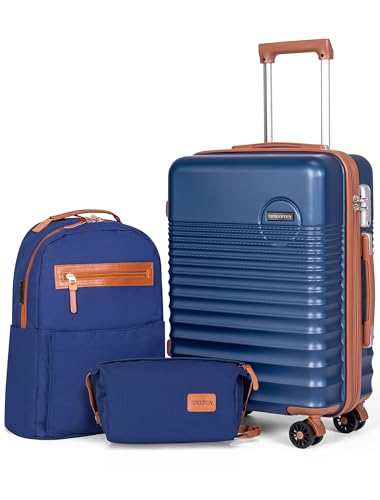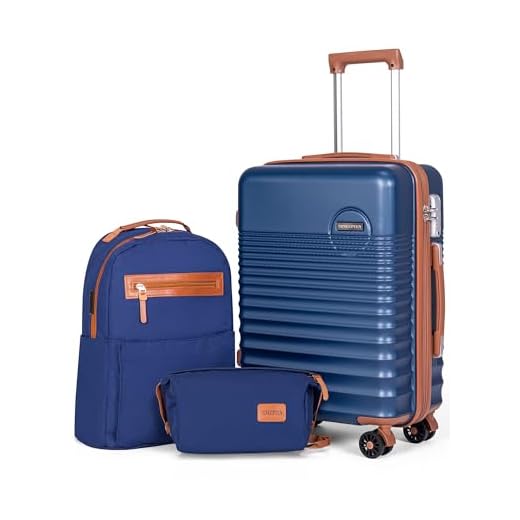



Actionable step: Reserve an additional checked baggage allowance via the airline website or official app at least 24 hours before the scheduled flight; typical savings versus airport counter prices range from 30% to 60%, and many carriers lock the lowest price 48–72 hours prior to departure.
Choose the correct allowance tier: common weight bands are 10 kg, 15 kg, 20–23 kg and 32 kg. For short-haul low-cost carriers, a 10–20 kg option usually costs €10–€60 when prebooked and €30–€120 at the airport; for legacy carriers a prepaid 23 kg bag often ranges €20–€80 on intra-Europe routes and €50–€150 on long-haul sectors. Overweight charges at check-in frequently start at €50 and escalate to €150+, so redistribute items between carry-on and checked items to stay within the purchased band.
When itinerary involves multiple tickets or different carriers, buy allowance for each segment unless the reservation shows through-checked service. Elite status, certain premium credit cards and some fare classes include at least one free checked item – verify the specific carrier policy before purchase. Keep confirmation email or mobile boarding pass with baggage receipt; kiosks and bag-drop counters accept prebooked allowances but will require the digital receipt or booking reference.
Packing and timing tips: weigh and measure bags at home (use a hanging scale; max linear dimensions usually 158 cm). Remove noncompliant items and distribute weight into smaller pieces rather than paying overweight fees. If plans change, check the airline’s modification window – many allow changes to baggage allowance up to check-in opening with a fee; refunds are rare unless the flight is cancelled by the operator.
Post-booking checked baggage options
Purchase checked baggage online immediately after reservation; web or mobile transactions made within 24–48 hours of booking typically cost 30–70% less than counter rates at the airport.
Typical tariffs: short-haul piece-based fares US$15–40, medium-haul US$25–80, long-haul US$30–200. Common weight allowances per piece: 15 kg (restricted fares), 20–23 kg (standard), 32 kg (premium/long-haul). Excess-weight surcharges commonly US$10–30 per kg; oversized/fragile item fees commonly US$50–200.
Process: locate the booking reference (PNR), open the airline’s Manage Booking or app, select passenger and flight segment, choose number of checked pieces or weight option, complete payment with card. When itinerary was booked through an online travel agency (OTA), baggage purchases must usually be completed through that OTA or by contacting its support; some OTAs forward requests to the operating carrier with an extra service fee.
Deadlines and constraints: many carriers permit online purchases up to check-in opening (typically 1–3 hours before departure for domestic and international flights), while several low-cost operators require baggage purchase before online check-in or within 24 hours of departure. Codeshare or interline itineraries require baggage allowance to be purchased with the operating carrier listed on the boarding pass.
At the airport: counter and kiosk purchases are allowed in most cases but attract significantly higher charges and longer queues; some carriers reserve the right to refuse piece-type requests at gate if not purchased in advance. Keep the confirmation email and verify the updated allowance on the itinerary or boarding pass; fees are generally non-refundable and non-transferable. For special items (sports equipment, musical instruments), pre-booking the dedicated allowance and obtaining a separate receipt is recommended.
How to verify whether a fare or ticket permits purchasing checked baggage
Inspect the e‑ticket/booking confirmation for a dedicated “Baggage allowance” or “Included baggage” line – common formats: “1PC 23kg”, “1 x 23 kg”, “20kg”, “Checked baggage not included”, or “Pieces/Weight: 0PC”. Exact text determines whether a checked item is part of the fare or must be purchased separately.
Step‑by‑step checks
Open the airline’s Manage Booking using the booking reference (PNR) and passenger surname; if a “Bags”, “Extras” or “Buy baggage” option appears, paid purchase through the carrier is available for that ticket. Absence of that option usually means the fare class forbids on‑line baggage sales and requires contacting the carrier or original agent.
Locate the fare basis (fare code) on the e‑ticket. Enter that fare basis in the carrier’s fare rules search or request the fare conditions from the issuing agent; fare rules list whether additional checked pieces may be purchased, weight/size limits, and any advance‑purchase deadlines.
Compare fare families on the carrier’s website (labels such as “Basic”, “Standard”, “Flex” or similar): the chart shows which bundles include checked pieces or only carry‑on. If the itinerary uses multiple airlines, verify the operating carrier for each segment and the ticketing carrier shown on the receipt – the most restrictive applicable rule can control allowance and purchase options.
Fees, timing and proof
Pre‑purchase rates are typically lower than airport rates; sample ranges: short‑haul European carriers often charge ~€10–€45 online for a 20kg piece and €30–€80 at the airport; long‑haul checked allowances frequently come as 1×23kg or 2×23kg on higher fare families. Confirm the price in Manage Booking before payment and save the purchase receipt as proof to present at check‑in.
If ambiguity remains, contact the issuing travel agent or the airline’s reservations desk quoting booking reference, fare basis and flight numbers; request explicit confirmation whether a checked piece can be purchased and the exact fee structure (online vs airport). Retain written confirmation (email or screenshot) when a manual exception or special allowance is granted.
Step-by-step: purchase checked baggage through airline website or mobile application
Purchase checked baggage immediately after ticketing; online rates are commonly 30–60% lower than airport counter prices and inventory for discounted weight/extra-piece options sells out fast.
Website – 1) Sign in or use Manage Booking with reservation code and passenger surname. If reservation isn’t linked to an account, enter PNR and last name on the airline’s Manage/Bookings page.
Website – 2) Open the specific flight segment, select Extras or Services, then choose the baggage option by piece count or weight tier (typical choices: 15 kg, 23 kg, 32 kg or additional pieces).
Website – 3) Confirm dimensions and weight allowance shown (standard checked dimension limit: 158 cm linear). Overweight or oversize fees listed separately; expect overweight charges of approximately $50–$200 and oversize fees of $75–$200 depending on carrier and route.
Website – 4) Pay via saved card, new card entry, PayPal, Apple Pay or Google Pay. Look for a final price breakdown (fare + taxes + service fee). If multiple passengers on the booking require bags, assign per passenger before checkout.
Website – 5) Verify the booking is updated: receipt number and baggage allowance code should appear in the itinerary and email confirmation. Take a screenshot and store the PDF receipt; the confirmation often updates the boarding pass to show included checked pieces but sometimes requires presenting the receipt at drop-off.
Mobile app – 1) Open the airline app, go to My Trips or Upcoming, tap the booking, then Manage Trip. Apps frequently consolidate purchase steps into fewer taps and offer Apple/Google Pay for one-touch payment.
Mobile app – 2) Select baggage/extras, choose the weight or extra-piece option, assign to passenger, and complete payment. Saved payment methods will speed checkout; enable push notifications for purchase confirmation and bag-tag updates.
Timing and limits: most legacy carriers accept purchases up to check-in close (often 1–3 hours before departure); many low-cost carriers restrict online purchases to at least 2–4 hours before departure. For same-day airport purchases expect 30–100% higher fees.
At the airport: present the boarding pass and baggage purchase receipt at bag drop; if purchase was completed during online check-in the bag drop agent will usually print tags immediately. If the itinerary does not reflect the purchase on the mobile boarding pass, show the emailed receipt or app order screen.
Modifications and cancellations: policies vary – some airlines allow switching weight tiers or removing a purchased piece up to 24 hours before departure (fees may apply); refunds are uncommon. Use Manage Booking to change purchases, and retain the updated confirmation.
Quick checklist before travel: confirm reservation shows baggage allowance or order reference, save receipt screenshot, note allowed weight and dimensions, carry a payment card or digital wallet used for purchase, and arrive at airport bag drop within the carrier’s recommended time window for checked items.
Airport checked-bag procedures: check-in desks, kiosks and cutoff times
Arrive at least 90 minutes before short-haul departures and 180 minutes before long-haul departures when items must be checked at the airport.
-
Check-in desk workflow
- Present passport/ID and booking reference; staff will confirm booking and fare rules.
- Counter agent places items on a scale, verifies dimensions and issues a baggage receipt/tag with barcode.
- Retain the receipt until final destination; that document is required for any damage or misrouting claims.
- Typical weight limits: 23 kg (50 lb) for most economy fares, 32 kg (70 lb) for premium/overweight-eligible tickets. Linear size limit commonly 158 cm (62 in).
- Overweight charges commonly range $75–$200; oversize fees commonly $50–$200 depending on carrier and route.
-
Self-service kiosks + bag drop
- At kiosk: enter PNR or scan passport, select the option for checked items, pay by card, and print the tag/receipt.
- If the kiosk prints only a tag, attach it and proceed to the staffed bag-drop counter for final acceptance.
- Some airports permit full service at bag-drop (tagging and acceptance) without visiting the staffed desk; follow on-screen prompts and signage.
- Have the card used for payment and the travel document ready to speed transaction time.
-
Cutoff times (typical ranges)
- Bag drop closes commonly 30–45 minutes before domestic departures on full-service carriers.
- For international departures bag-drop commonly closes 60–120 minutes before scheduled departure; many long-haul flights require 90–120 minutes.
- Low-cost carriers often enforce earlier closures (60–120 minutes) – refer to the carrier’s published times.
- Check-in counters and security checkpoints may close earlier than gate boarding; missing the published cutoff usually results in denial of acceptance.
-
Fees and timing strategy
- Pre-purchase online is almost always cheaper: typical savings range from 20% up to 60% compared with airport counter rates.
- Airport counter rates for a first checked item on short-haul routes commonly run $25–$60 (or €20–€60); long-haul intercontinental rates may be higher.
- If purchased at the gate (when permitted), expect premium surcharges and limited acceptance subject to space on the aircraft.
-
Practical checklist for airport processing
- Booking reference or e-ticket number, passport/ID, and a payment card.
- Confirmed permitted weight and dimensions for the fare class assigned.
- Remove prohibited items and lock fragile contents; affix a visible name tag and contact details.
- Obtain and photograph the baggage receipt barcode before relinquishing items.
- Allow extra time at major hubs during peak hours and holiday periods; staffing levels affect queue times.
For case selection guidance when transporting business equipment or fragile items, consider a durable shell – reference: best luggage for business travelers hard shell or not.
Fees, payment methods and confirmation process to avoid surprises
Prepay online 24–48 hours before departure to lock lower rates and obtain an immediate electronic receipt showing the paid extra and a payment reference.
Typical fee ranges (market averages): short domestic routes USD 15–60 / EUR 12–50 per piece; short international USD 25–80 / EUR 20–70; long-haul USD 60–150 / EUR 50–130. Weight-based pricing often runs USD/EUR 8–15 per kilogram for excess kilos; overweight surcharges commonly range USD 50–200 depending on carrier and route. kiosk/airport on-the-day rates frequently cost 20–100% more than web prices.
Payment methods: major credit and debit cards, PayPal, Apple Pay and Google Pay are widely accepted online; airport kiosks accept card and sometimes cash. Prefer a card with strong dispute protection and low foreign-transaction fees when booking outside the billing currency. When a third-party agent is involved, expect separate service fees and different refund rules; paying directly through the airline typically avoids extra commissions.
Confirmation elements to verify immediately: booking reference or PNR updated to show number of checked pieces or baggage allowance; an emailed receipt with a payment reference number and itemized charge; updated e-ticket or Manage Booking page showing the paid extra; a transaction line on the bank or card statement matching the airline merchant name and amount. Save screenshots and the full email headers until travel is complete.
Discrepancy resolution: if the booking page or boarding documentation does not reflect the paid item, contact the airline via the support channel listed on the carrier’s website within 24–48 hours of payment, provide the payment reference and a screenshot of the receipt, and request correction in writing. If no resolution, escalate with the payment provider using the transaction ID.
Third-party and packing notes: verify seller reputation and fee transparency before purchasing extras through non-airline sites – examples of review resources include best umbrella company netherlands. When transporting household or DIY items, consult packing and safety guides such as how to make a scrubber cylinder and the carrier’s restricted-items list to avoid confiscation or added charges.
FAQ:
Can I add checked (hold) luggage after I have already booked my flight?
Yes. Most carriers let you add checked baggage after booking via the airline website, mobile app or call centre. Use your booking reference and passenger name to access the reservation, select the baggage option and pay. If you miss the online window, you can usually buy baggage at the airport check-in desk, but fees there are often higher. Keep the weight and size rules for your fare in mind before you buy.
How much will it cost me to add a hold bag if I add it later?
Fees vary widely by carrier, route and how late you add the bag. For short domestic flights on legacy carriers prices might start around $15–$35 per bag when added online before check-in, while low-cost airlines often charge more per segment. International flights commonly range from about $30 to $120 depending on weight bands and the market. If you wait until airport check-in the charge can be substantially higher, and overweight or oversize bags attract extra surcharges. Check the specific airline’s baggage tariff for exact amounts before paying.
When is the latest moment I can add hold luggage, and can I add it during online check-in?
Many airlines allow adding hold luggage during the online check-in process, which typically opens 24–48 hours before departure. Some carriers permit adding baggage up to a few hours before the flight via the website or app; others require purchase before the online check-in window begins. If online options are closed, you can usually purchase baggage at the airport counter or a self-service kiosk, but the price will often be higher. To avoid surprises, log in to your booking and add baggage as soon as you know you need it, then save any confirmation or receipt you receive.
What size, weight and item restrictions apply to hold luggage and what should I not pack in checked bags?
Airlines publish specific weight and size limits for checked luggage; a common allowance for economy is 20–23 kg (44–50 lb) per bag and a total linear dimension (length+width+height) around 158 cm (62 in). Fees apply for overweight and oversize pieces. Prohibited or restricted items include spare lithium batteries, many types of e-cigarettes and certain hazardous goods, which often must travel in the cabin or be declared. Firearms and some sporting equipment have special rules and usually require advance declaration and secure packing. Fragile, valuable or irreplaceable items are best carried in cabin baggage. Always review the airline’s baggage policy and your destination’s customs limits before packing to avoid confiscation or additional charges.









